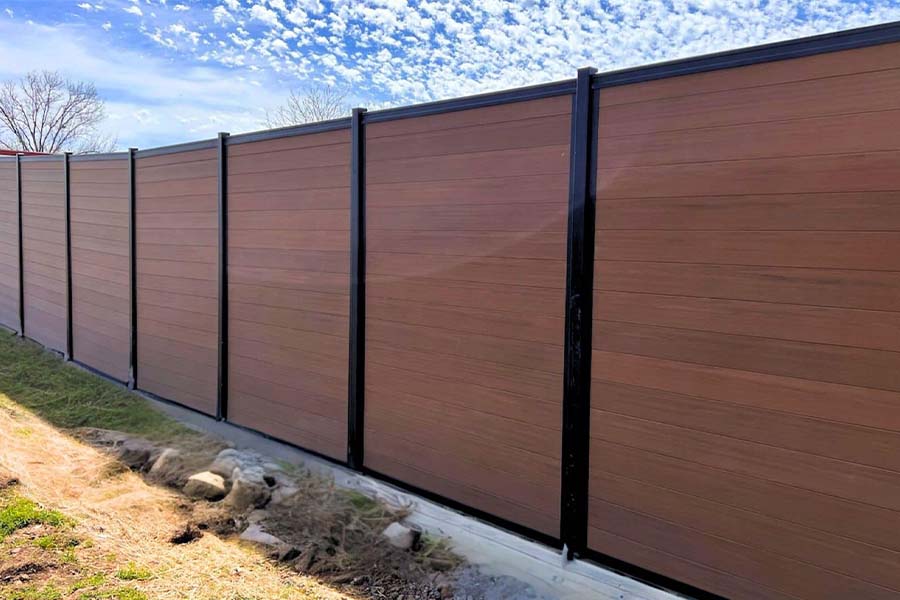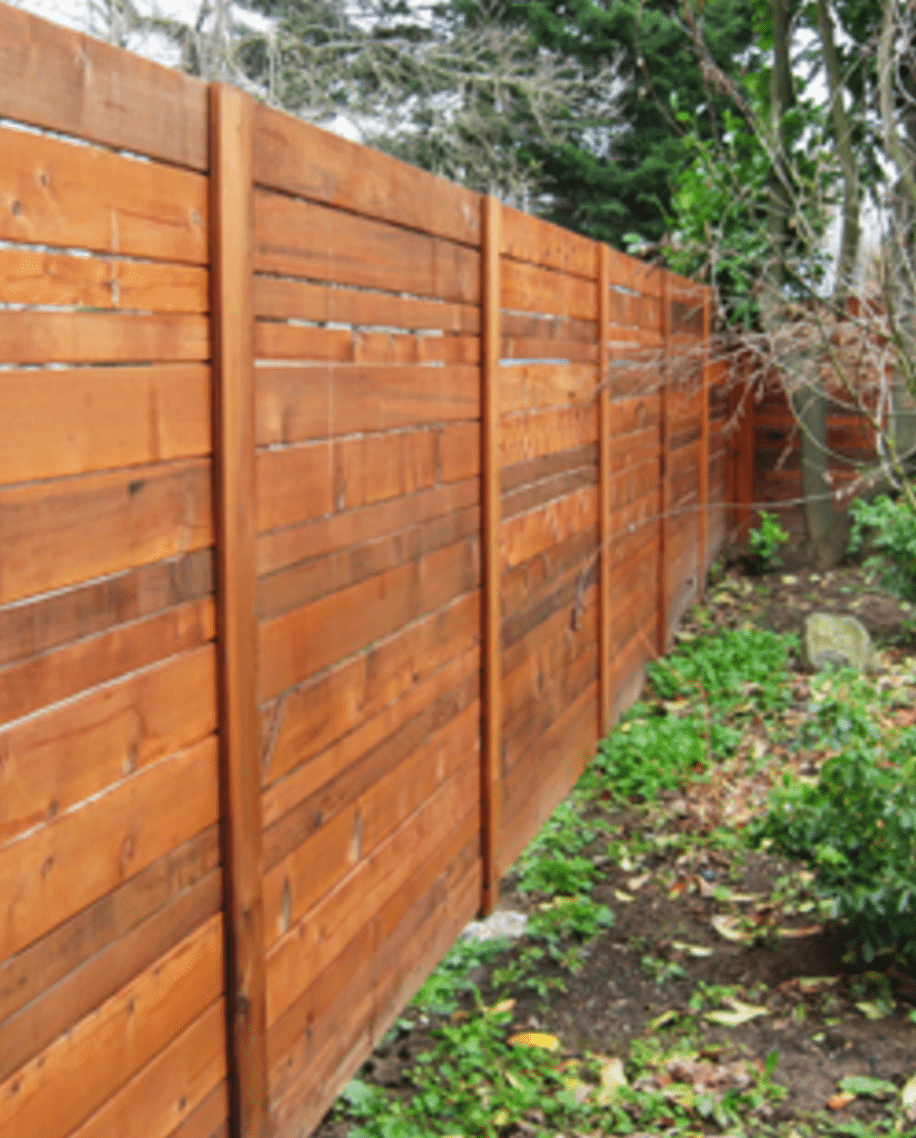All Categories
Featured
From heavy rainfall and snow to intense sunlight and wind, weather-related damage is one of the most common reasons of fencing deterioration. While you can not manage the weather condition, there are a number of ways to shield your fence from the harmful effects of climate and ensure it lasts for years to come.
Wood Fences: While wood fences are a classic option, they are highly at risk to dampness and parasites. To make a wood fencing much more resilient, choose for pressure-treated lumber, cedar, or redwood. These products are extra resistant to rot and bugs. You'll still require to safeguard the timber from the aspects with routine upkeep.
Plastic Fences: Vinyl fences are very sturdy and require little maintenance. They are immune to fading, fracturing, and bending, making them optimal for areas that experience severe sunlight, rainfall, or cold climate. Vinyl also will not rot or draw in parasites, supplying long-term defense without the requirement for constant maintenance.
Metal Fences: Wrought iron and light weight aluminum fencings are superb choices for their toughness and resistance to wind and wetness. However, they are prone to rusting in time, specifically if subjected to regular rainfall or moisture. Choose galvanized or powder-coated metal fences to lessen the threat of rust.
![]()
Composite Fences: Incorporating wood fibers and plastic, composite fencings are resistant to rotting, fading, and bug damages. They provide the look of wood with much less maintenance, making them a perfect alternative for areas with variable weather condition problems.
![]()
Wood Fences: A great quality timber sealant or stain is necessary to safeguard your fence from the elements. Be certain to reapply the layer every pair of years to maintain your fence in leading condition.
Plastic Fences: While vinyl is low-maintenance, you can still protect it additionally by applying a UV protectant. These coverings help avoid staining created by long term sun direct exposure. Additionally, use vinyl-specific cleansers to keep the surface area complimentary of spots or dust accumulation.
Metal Fences: To shield metal fencings from corrosion and rust, take into consideration using a rust-inhibiting guide complied with by a safety paint developed for outdoor usage. Powder layer supplies a lasting and long lasting surface that can endure extreme weather. if possible.
Wood Fences: Clean your wood fence with a pressure washer or a soft cloth and light cleaning agent. Make sure to get rid of leaves, mold, and dirt that can hold dampness versus the wood. Check the fence on a regular basis for indications of rot, fractures, or insect infestations. Early detection can avoid small issues from developing into pricey repairs.
Vinyl Fences: Vinyl fences are simple to tidy with soap and water. For harder spots, you can utilize a moderate bleach service or a plastic cleaner to restore the fencing's look. Do not fail to remember to inspect for any kind of splits that may let water in, bring about additional damages.
Metal Fences: Clean metal fences with a soft cloth to eliminate dust, dust, and corrosion. If you see rust spots, eliminate them instantly with a cable brush and deal with the location with a rust-resistant guide or paint to stop it from spreading.
Wood Fences: When setting up wood fencing blog posts, make certain they are established deeply into the ground, ideally listed below the frost line to avoid shifting during freezing temperature levels. Use concrete to secure the blog posts and avoid them from leaning or being uprooted by solid winds.
Steel Fences: For steel fences, ensure that the blog posts are strongly secured in concrete. This is particularly crucial in regions with regular storms or hefty winds. You may likewise wish to mount additional supporting to offer additional support against wind stress.
In addition, extreme moisture from close-by plants can result in mold and rot in wood fences, so keep vegetation at a risk-free distance to permit for correct air flow and drain.
Metal fencings should be evaluated for corrosion before the winter season starts, and any kind of affected locations should be treated with rust-resistant products. In addition, using a coat of paint or safety covering prior to the winter sets in can help protect your fencing from ice and snow damages.
![]()
Final thought. Protecting your fence from weather-related damages requires a mix of correct material choice, routine maintenance, and proactive treatment. Whether you have a wood, plastic, metal, or composite fence, the ideal protective measures can extend its lifespan and keep its look. By following these basic yet efficient actions, you can guard your fencing versus the aspects and keep it looking great for several years to come.
- Pick Weather-Resistant Materials. One of one of the most efficient ways to shield your fence is by picking the appropriate material for your environment. Specific materials are more durable and better suited to withstand particular climate condition.
Wood Fences: While wood fences are a classic option, they are highly at risk to dampness and parasites. To make a wood fencing much more resilient, choose for pressure-treated lumber, cedar, or redwood. These products are extra resistant to rot and bugs. You'll still require to safeguard the timber from the aspects with routine upkeep.
Plastic Fences: Vinyl fences are very sturdy and require little maintenance. They are immune to fading, fracturing, and bending, making them optimal for areas that experience severe sunlight, rainfall, or cold climate. Vinyl also will not rot or draw in parasites, supplying long-term defense without the requirement for constant maintenance.
Metal Fences: Wrought iron and light weight aluminum fencings are superb choices for their toughness and resistance to wind and wetness. However, they are prone to rusting in time, specifically if subjected to regular rainfall or moisture. Choose galvanized or powder-coated metal fences to lessen the threat of rust.

Composite Fences: Incorporating wood fibers and plastic, composite fencings are resistant to rotting, fading, and bug damages. They provide the look of wood with much less maintenance, making them a perfect alternative for areas with variable weather condition problems.
- Apply Safety Coatings. Regardless of the product, using protective finishings is vital in expanding the life of your fence. Coatings form a barrier that guards your fence from dampness, UV rays, and other ecological stressors.

Wood Fences: A great quality timber sealant or stain is necessary to safeguard your fence from the elements. Be certain to reapply the layer every pair of years to maintain your fence in leading condition.
Plastic Fences: While vinyl is low-maintenance, you can still protect it additionally by applying a UV protectant. These coverings help avoid staining created by long term sun direct exposure. Additionally, use vinyl-specific cleansers to keep the surface area complimentary of spots or dust accumulation.
Metal Fences: To shield metal fencings from corrosion and rust, take into consideration using a rust-inhibiting guide complied with by a safety paint developed for outdoor usage. Powder layer supplies a lasting and long lasting surface that can endure extreme weather. if possible.
- Regular Cleaning and Examinations. Appropriate cleansing and regular inspections are necessary to keeping the stability of your fence. Build-up of mold, dust, and debris can trap wetness versus your fence and create long-term damage.
Wood Fences: Clean your wood fence with a pressure washer or a soft cloth and light cleaning agent. Make sure to get rid of leaves, mold, and dirt that can hold dampness versus the wood. Check the fence on a regular basis for indications of rot, fractures, or insect infestations. Early detection can avoid small issues from developing into pricey repairs.
Vinyl Fences: Vinyl fences are simple to tidy with soap and water. For harder spots, you can utilize a moderate bleach service or a plastic cleaner to restore the fencing's look. Do not fail to remember to inspect for any kind of splits that may let water in, bring about additional damages.
Metal Fences: Clean metal fences with a soft cloth to eliminate dust, dust, and corrosion. If you see rust spots, eliminate them instantly with a cable brush and deal with the location with a rust-resistant guide or paint to stop it from spreading.
- Reinforce Your Fence with Appropriate Setup. Correct installment is one of one of the most effective means to avoid weather-related damage. A fencing that is poorly mounted is most likely to collapse or endure damages during storms.
Wood Fences: When setting up wood fencing blog posts, make certain they are established deeply into the ground, ideally listed below the frost line to avoid shifting during freezing temperature levels. Use concrete to secure the blog posts and avoid them from leaning or being uprooted by solid winds.
Steel Fences: For steel fences, ensure that the blog posts are strongly secured in concrete. This is particularly crucial in regions with regular storms or hefty winds. You may likewise wish to mount additional supporting to offer additional support against wind stress.
- Trim Trees and Hedges Near Your Fencing. Overgrown trees and hedges can create significant damages to your fence, especially during high winds or hefty storms. Tree branches can scuff versus the fence, triggering scratches, and their roots can destabilize the posts. Keep greenery cut and guarantee that tree branches are not leaning on or near the fence.
In addition, extreme moisture from close-by plants can result in mold and rot in wood fences, so keep vegetation at a risk-free distance to permit for correct air flow and drain.
- Winterize Your Fencing. If you reside in a location with severe winters, take extra precautions to shield your fence from freezing temperatures, snow, and ice. For wood fencings, ensure the base of the posts rises above ground degree to avoid water accumulation, which can break the wood and freeze. Think about using a dampness obstacle around the base of the messages to keep them dry during the cold weather.
Metal fencings should be evaluated for corrosion before the winter season starts, and any kind of affected locations should be treated with rust-resistant products. In addition, using a coat of paint or safety covering prior to the winter sets in can help protect your fencing from ice and snow damages.
- Post-Storm Fixes. Storms can trigger immediate damages to your fence, consisting of dropped branches, busted messages, or dislodged panels. After each tornado, examine your fence thoroughly to look for any noticeable damage. Address small concerns swiftly before they come to be larger, much more costly repair services. If your fencing has actually been seriously harmed, it's a good idea to speak with a professional for fixings to guarantee it continues to be structurally audio.

Final thought. Protecting your fence from weather-related damages requires a mix of correct material choice, routine maintenance, and proactive treatment. Whether you have a wood, plastic, metal, or composite fence, the ideal protective measures can extend its lifespan and keep its look. By following these basic yet efficient actions, you can guard your fencing versus the aspects and keep it looking great for several years to come.
Latest Posts
Specialist Commercial Roofing Solutions in North Platte, Nebraska
Published en
2 min read
Find Affordable Auto Repairs with Montclare’s Limited-Time Service Specials
Published en
1 min read
Boost Your Home's Exterior with Weathercraft's Home siding Solutions
Published en
1 min read
More
Latest Posts
Specialist Commercial Roofing Solutions in North Platte, Nebraska
Published May 27, 25
2 min read
Find Affordable Auto Repairs with Montclare’s Limited-Time Service Specials
Published May 26, 25
1 min read
Boost Your Home's Exterior with Weathercraft's Home siding Solutions
Published May 25, 25
1 min read